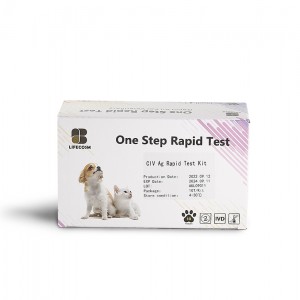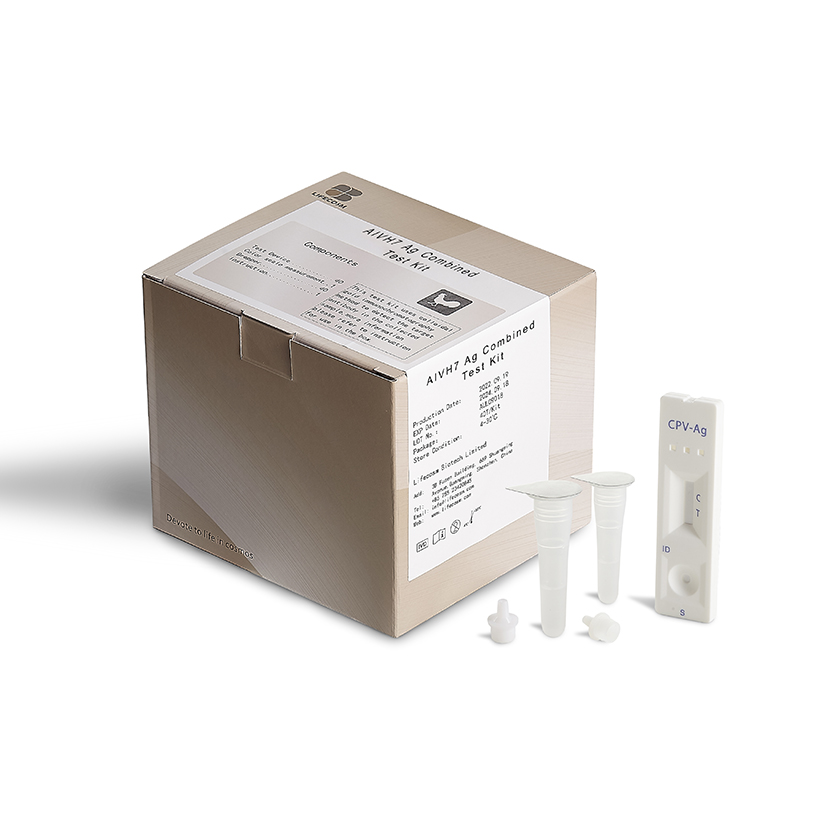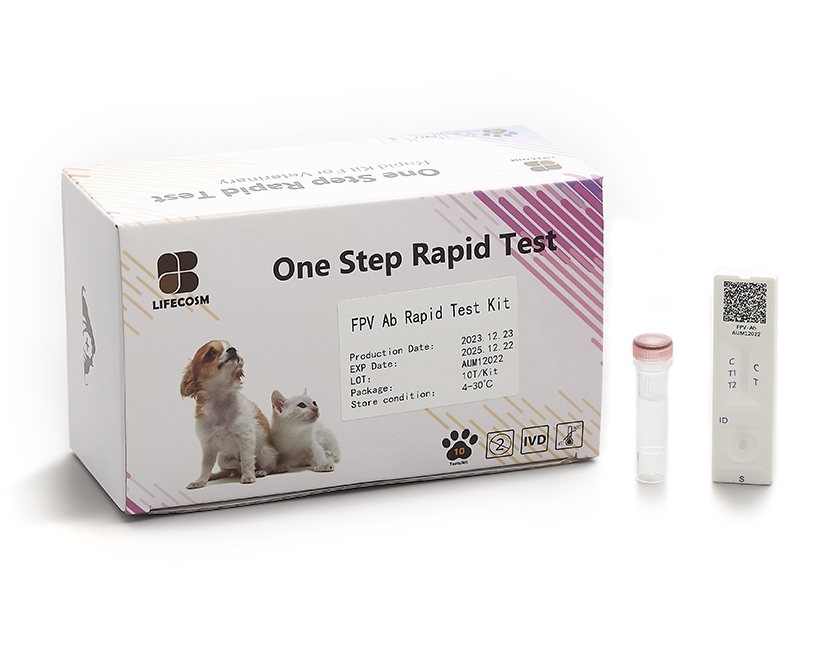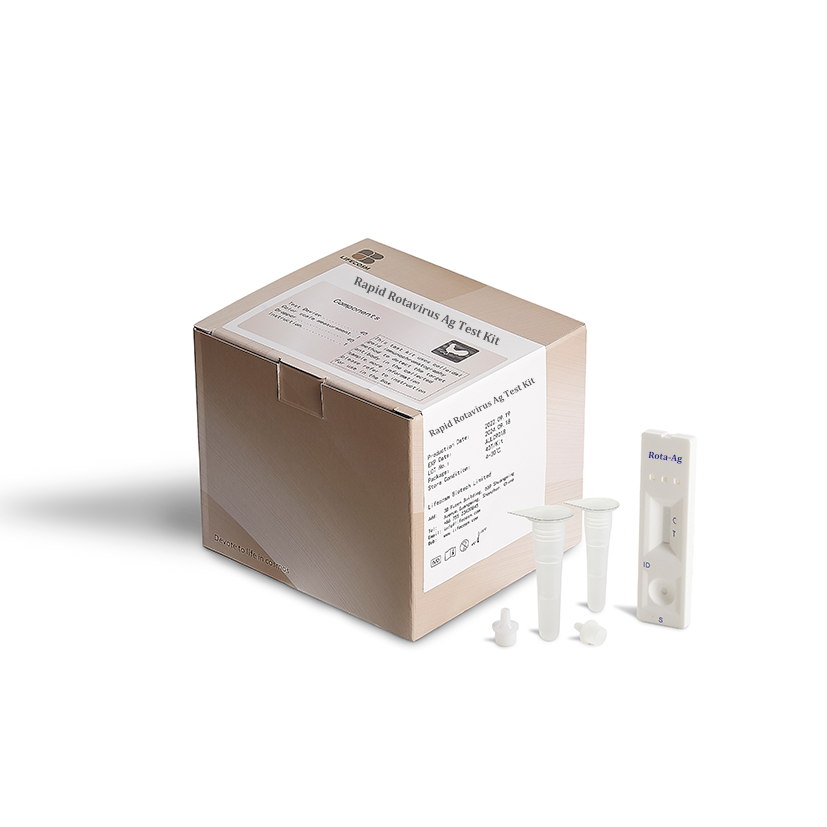
Products
Lifecosm Canine influenza virus Ab test kit
Canine influenza virus Ab test kit
| Catalog number | RC-CF05 |
| Summary | Detect the antibodies of Canine Influenza viruses within 10 minutes |
| Principle | One-step immunochromatographic assay |
| Detection Targets | Antibodies of Canine Influenza virus |
| Sample | Canine whole blood, serum or plasma |
| Reading time | 10 minutes |
| Sensitivity | 100.0 % vs. ELISA |
| Specificity | 100.0 % vs. ELISA |
| Quantity | 1 box (kit) = 10 devices (Individual packing) |
| Contents | Test kit, Tubes, Disposable droppers |
| Storage | Room Temperature (at 2 ~ 30℃) |
| Expiration | 24 months after manufacturing |
|
Caution |
Use within 10 minutes after openingUse appropriate amount of sample (0.01 ml of a dropper)
Use after 15~30 minutes at RT if they are stored under cold circumstances Consider the test results as invalid after 10 minutes |
Information
Dog flu, or canine influenza virus, is an infectious respiratory disease caused by an influenza A virus, similar to the viral strains that cause influenza in people. There are two known strains of dog flu found in the United States : H3N8, H3N2
The H3N8 strain actually originated in horses. The virus jumped from horses to dogs, becoming a canine influenza virus around 2004, when the first outbreaks affected racing Greyhounds at a track in Florida.
The H3N2, originated in Asia, where scientists believe it jumped from birds to dogs. H3N2 is the virus responsible for the 2015 and 2016 outbreaks of canine influenza in the Midwest and continues to spread throughout the United States.
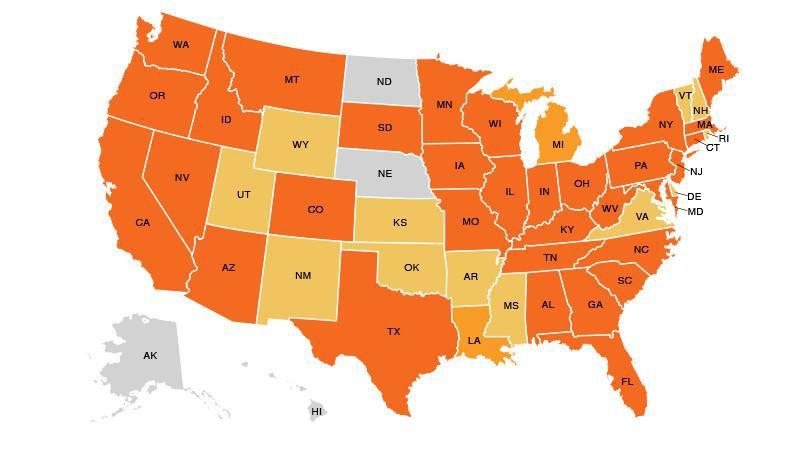

Prevalance of H3N2 and H3N8 in The United States of America
H3N8 and H3N2 Canine Influenza Viruses Understanding These New Viruses in Dogs, Vet Clin Small Anim, 2019
Symptoms
Dogs that are infected with the canine influenza virus may develop two different syndromes:
Mild – These dogs will have a cough that is typically moist and can have nasal discharge. Occasionally, it will be more of a dry cough. In most cases, the symptoms will last 10 to 30 days and usually will go away on their own. It’s similar to kennel cough but persists longer. These dogs may benefit from dog flu treatment to reduce the duration or severity of symptoms.
Severe – Generally, these dogs have a high fever (above 104 degrees Fahrenheit) and develop signs very quickly. Pneumonia can develop. The canine influenza virus affects the capillaries in the lungs, so the dog may cough up blood and have trouble breathing if there is bleeding into the air sacs. Patients may also develop secondary bacterial infections, including bacterial pneumonia, which can further complicate the situation
Prevention
Canine influenza vaccines are currently available as separate vaccines for each of the two strains. The first time your dog is vaccinated, they will require a booster 2 to 4 weeks later. Thereafter, the canine influenza vaccine is administered annually. In addition, there are other respiratory conditions that can be vaccinated against, specifically Bordetella bronchiseptica, the bacteria responsible for what is commonly called "kennel cough."
Any dog that is suspected to have canine influenza should be isolated from other dogs. Those dogs with the mild form of the infection usually recover on their own. Canine influenza is not a contagion issue for humans or other species.
Infection may be able to be prevented by avoiding places where dogs congregate when the dog flu is active in your region.
Treatment
The mild form of dog flu is usually treated with cough suppressants. Antibiotics may be used if there is a secondary bacterial infection. Rest and isolation from other dogs is very important.
The severe form of dog flu needs to be treated aggressively with a broad spectrum of dog antibiotics, fluids and supportive care. Hospitalization may be necessary until the dog is stable. For some dogs, canine influenza is deadly and should always be treated as a serious disease. Even after returning home, the dog should be isolated for several weeks until all canine influenza symptoms have fully resolved.
Diagnosis
If your dog develops the signs of dog flu described when there is an outbreak in your region, see your veterinarian as soon as possible. Usually, increases are seen in the white blood cells, specifically the neutrophils, a white blood cell that is destructive to microorganisms. X-rays (radiographs) can be taken of the dog's lungs to characterize the type and extent of pneumonia.
Another diagnostic tool called a bronchoscope can be used to see the trachea and larger bronchi. Cell samples can also be collected by conducting a bronchial wash or a bronchoalveolar lavage. These samples will typically have large amounts of neutrophils and may contain bacteria.
Detecting the virus itself is very difficult and is usually not required for treatment. There is a blood (serological) test that can support a canine influenza diagnosis. In most cases, a blood sample is taken after initial symptoms develop and then again two to three weeks later. Because of this, your dog will be treated based on the signs she is showing.




